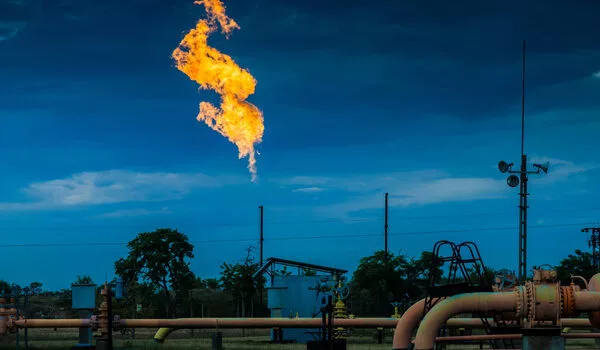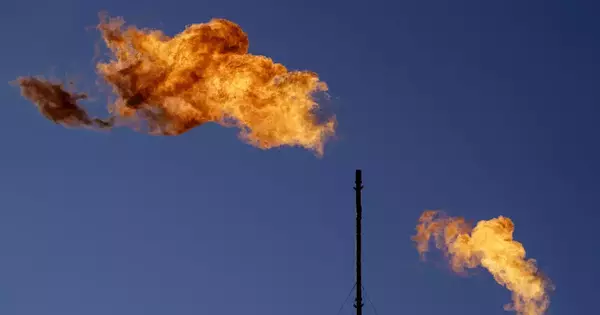Flares are used to burn flammable gases that would otherwise escape into the atmosphere. Flaring may be required in upstream oil and gas operations for safety reasons, due to a lack of capacity to use produced gases, or as part of routine emission controls. Flaring accounts for approximately 145 billion cubic meters of gas per year in oil and gas operations worldwide, accounting for 2% of global methane emissions from oil and gas production.
Flames illuminate the sky in many oil and gas-producing regions. According to oil and gas companies, flares burn off 98 percent of the escaping natural gas. However, observations of three U.S. oil and gas fields show that efficiency is only around 91 percent, according to a study published in the journal Science. Making up the difference would require the removal of nearly 3 million cars from the road.
The natural gas that is escaping is mostly methane. This greenhouse gas remains in the atmosphere for only nine to ten years, but its warming potential is 80 times that of carbon dioxide. As a result, oil and gas companies use flares to burn the methane, producing less potent carbon dioxide and water. The industry and the U.S. government assumed those flares worked at 98 percent efficiency. But previous studies said that might be too optimistic, says Genevieve Plant, an atmospheric scientist at the University of Michigan in Ann Arbor.
Half of the difference is due to flares that aren’t burning. “We expected that flares might show a range of efficiencies, but we did not expect to see so many unlit flares. Between 3 and 5 percent of flares weren’t working at all. If those fires were lit, and 98 percent efficiency achieved, the result could remove the equivalent of about 13 million metric tons of carbon from the atmosphere.
Genevieve Plant
Plant and her colleagues used planes to collect air samples over more than 300 flares in North Dakota’s Bakken Basin and Texas’ Permian and Eagle Ford basins, which account for more than 80% of the country’s flaring. The samples revealed five times the amount of unburned methane previously estimated.
The drop from 98 to 91 percent efficiency may appear minor, but the implications are significant, according to Dan Cusworth, an atmospheric scientist at the University of Arizona in Tucson who was not involved in the study. “Any percentage that is in the methane phase rather than the CO2 phase is significantly more problematic.”

Half of the difference is due to flares that aren’t burning. “We expected that flares might show a range of efficiencies, but we did not expect to see so many unlit flares,” Plant says. Between 3 and 5 percent of flares weren’t working at all. If those fires were lit, and 98 percent efficiency achieved, the result could remove the equivalent of about 13 million metric tons of carbon from the atmosphere. Light ‘em up.
Flaring can be reduced in three ways. Ideally, waste gas production is avoided. If this is not possible, waste gas recovery for sale can generate revenue. Otherwise, storing (re-injecting) gases in oil and gas reservoirs is an option. If the waste gas cannot be recovered and sold as natural gas or natural-gas liquid product, or if it cannot be stored, it may be able to be used to generate electricity. If flaring cannot be avoided, improving flare efficiency can reduce methane emissions.





